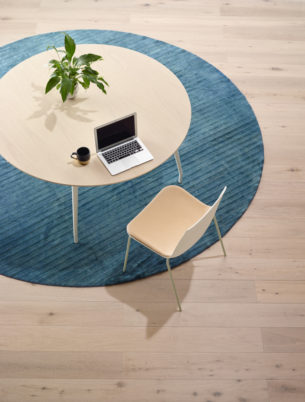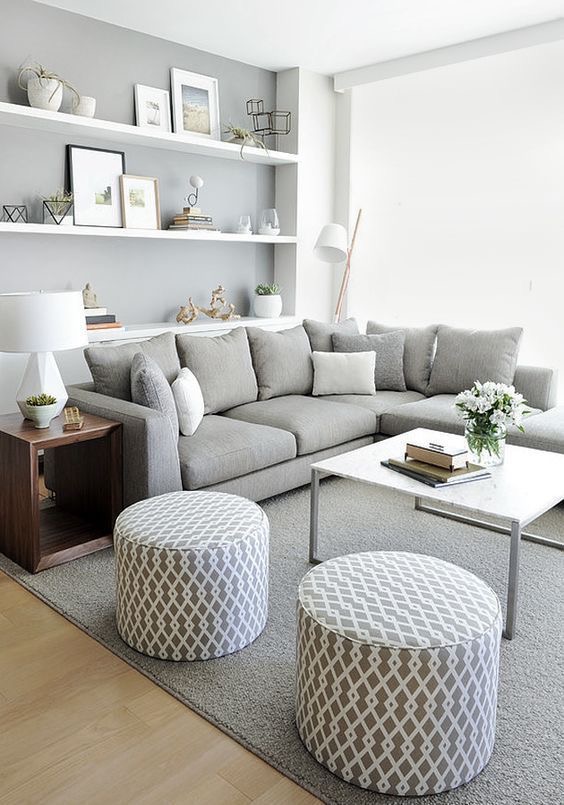This article has been republished with the permission of Furniture Today USA.
Monday (April 24), Clint Engel of Furniture Today broke news of Amazon unveiling a new marketplace model for furniture. Starting in the third quarter of 2017, Amazon will no longer require furniture retailers to ship nationwide. Instead, furniture retailers selling on Amazon will be able to choose the regions where they want to list and ship their furniture.

So what to make of this? Here’s my perspective…
Words: Carl Prindle, founder and CEO of Blueport Commerce
Photography: Pinterest
Is This The End Of Wayfair? Hardly.
News of Amazon’s push into furniture retail moved markets, with Wayfair’s stock sliding 5.74% on Monday.
Over the past couple days, I’ve had calls with industry analysts, retailers and investors alike, all asking the same question—does this move change furniture ecommerce as we know it? Is Wayfair doomed?
My answer? Not at all.
The bulk of Wayfair’s business is home décor—UPS-able items such as home goods, lamps, barstools, ready-to-assemble tables and the like. It’s an amazing décor business—far better than Amazon’s—and one that won’t be impacted by this Amazon big-ticket furniture move.
That may change if Amazon changes it’s current Walmart-like décor shopping experience to something more inspirational, but for now, I don’t expect this news to materially impact Wayfair. And as for who will ultimately do better in big-ticket furniture? This news suggests the winner will be furniture retailers.

The Good News For Furniture Retailers? Amazon Thinks You’re Better At Furniture
The real news here is that Amazon is doubling down on the brick & mortar model for furniture.
Amazon has changed their hugely successful 3rd party seller program — just for furniture. That’s a big deal. Other than a dalliance with local cell phone carriers ages ago, it’s the first time they’ve allowed local listing and shipping. Furniture is the only category for which they’ve fundamentally changed how Amazon works.
Localizing their marketplace is something Amazon hesitated to do for a long time. I first spoke to Amazon about the potential of a geofenced marketplace model in 2002, and several times since. Their answer then and always has been “maybe someday” and implicitly, I imagine, “not if we don’t have to”.

Monday’s announcement suggests that today is that someday, and for now, they think furniture retailers do it better than they can.
Furniture remains among the largest categories Amazon has yet to crack. They’re now approaching furniture as we have for quite some time — with the understanding that furniture is a fundamentally omnichannel category, one in which brick & mortar retailers have tremendous advantages.
Think about it – in the last few weeks, Amazon has both announced they may open furniture stores, and changed their marketplace model specifically to enable furniture retailers’ local advantages. Unlike countless retail categories that have fallen to Amazon – stores and local delivery matter in furniture. Amazon is adapting to that reality.

In most categories, retailers would love to be Amazon. In this category, Amazon wants to be more like you.
Is This New Model A Good Deal For Retailers?
So, you’re a furniture retailer with stores and local delivery – the envy of Amazon. Do you try out this new model?
I would, but in a limited way. You should also hope it doesn’t work out the way Amazon plans.
As a way to get in front of more customers, Amazon could be a home run for furniture retailers. 55% percent of people start online product discovery on Amazon. Getting in front of local shoppers on Amazon could be a tremendous source of new traffic to a furniture retailer’s website and store.

If you have a great website, it’s easy to imagine people finding your furniture on Amazon, then buying on your site or in your local store rather than Amazon. After all, your site and stores offer better product information, the latest promotions, financing, real-time product availability, the ability to touch and feel, seamless delivery and much more.
In that case – someone finding you on Amazon, then buying from your website or store – you’ve gained a new customer and only paid Amazon a $39 a month listing fee. That’s a steal.
If you do list your products, it’s entirely likely you’ll be hoping not to sell anything on Amazon. A 15%/20% commission on furniture purchases is high. Sellers on Amazon lose rights to any data on an Amazon sale, giving them little opportunity to build their customer database and losing out on key competitive insights derived from online. Keeping Amazon updated on prices and product availability won’t be easy. Operationally, delivering Amazon orders won’t be seamless and shoppers will have great recourse through Amazon if things don’t go perfectly.
Maybe hardest of all, you’ll have to explain those Amazon orders to your salespeople. Selling on your own website, also designed to drive people into your stores, is one thing. Giving sales peoples’ commission to Amazon is another.

Net, net, if I’m a retailer with a great website, I’m testing the new Amazon marketplace program as a marketing platform. I’m doing it in a limited geography and measuring the results.
Here’s the key question that only testing will answer: does the benefit of shoppers finding me on Amazon and buying in my store or on my website outweigh the cost and headache of the odd Amazon sale?
And, if shoppers find product on Amazon but buy direct, how long will Amazon run an online furniture marketing program for $39 a month?
Regardless of the outcome, as a retailer with a great website, I’m feeling pretty good. Every bit of furniture news out of Amazon these days suggests I’m on the right path.


